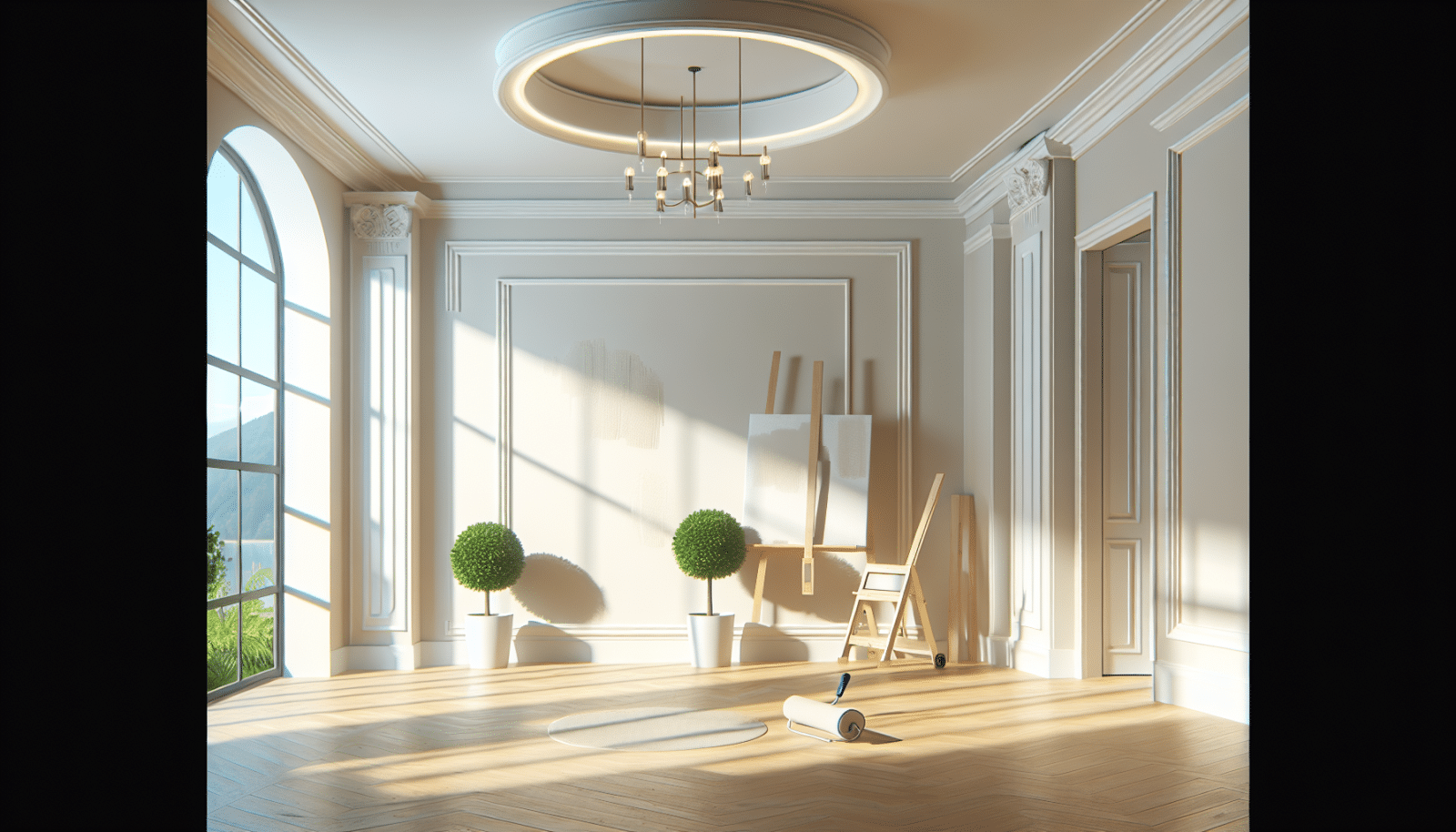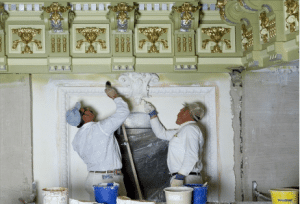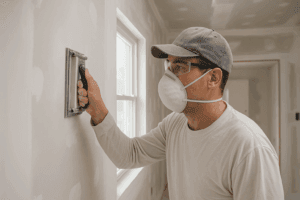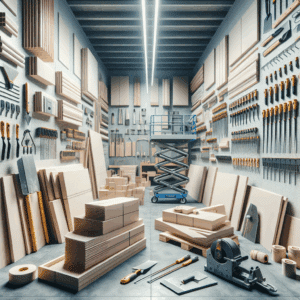At Utah Drywall & Repair, we know a smooth, perfectly painted drywall brings a room to life. But achieving that flawless finish can be tricky without the right preparation. In this article, we’ll share some essential primer tips to help you achieve that perfect paint job. This guide is designed to help homeowners who want to improve their Painting skills and enjoy long-lasting, professional results.
Contents
- 1 Why Primer is Essential
- 2 Choosing the Right Primer
- 3 Preparing Your Drywall
- 4 Priming New vs. Previously Painted Drywall
- 5 Applying the Primer
- 6 Drying Time and Recoating
- 7 Sanding Between Coats
- 8 Common Primer Mistakes to Avoid
- 9 The Final Touch: Your Paint
- 10 Expert Tips for DIY Enthusiasts
- 11 When to Call in Professionals
Why Primer is Essential
Primer isn’t just an optional step; it’s a crucial one. The primary purpose of a primer is to create a smooth, even surface for your paint. It blocks stains, prevents uneven coloring, and improves paint adhesion. This results in a more durable and aesthetically pleasing finish. Trust us; skipping this step can lead to more headaches down the road.
Choosing the Right Primer
Selecting the appropriate primer may seem overwhelming with the variety available. However, choosing the right one for your drywall isn’t complex. Latex primers are generally the go-to choice for drywall because they offer excellent adhesion and are easier to clean up. For those dealing with stains or moisture, an oil-based primer might be necessary.
Preparing Your Drywall
Preparation is key to achieving that perfect paint job. First, ensure the drywall is clean and free of dust and debris. Even small particles can affect the smoothness of your paint. Next, repair any nicks or holes with a quality joint compound. This ensures you’re starting with the most flawless surface possible.
Priming New vs. Previously Painted Drywall
Priming new drywall is different from dealing with previously painted surfaces. New drywall typically requires a high-build primer to cover Tape and joints effectively. In contrast, previously painted drywall might need a bonding primer to ensure the new paint adheres properly. Knowing these differences can make a significant impact.
Applying the Primer
Application technique affects the final result. Use a quality roller for larger areas and a brush for edges and corners. Start from the top and work your way down to ensure even coverage. Two thin coats are generally better than one thick coat. This approach helps to avoid drips and ensures a smoother surface.
Drying Time and Recoating
Patience pays off when priming your drywall. Each layer of primer needs adequate drying time before you can apply the next one or your final paint color. Check the manufacturer’s recommendations, but generally, waiting at least 24 hours provides the best results. Rushing this step can result in a less durable finish.
Sanding Between Coats
Sanding between primer coats may seem like an extra step, but it’s well worth it. Lightly sanding the primed surface helps to remove any imperfections and creates a smoother finish. Use fine-grit sandpaper and remove dust with a tack cloth before applying the next coat.
Common Primer Mistakes to Avoid
- Skipping Primer: It’s tempting to go straight to paint, but trust us, primer makes all the difference.
- Using the Wrong Type: The wrong primer can lead to peeling or uneven color. Choose wisely based on your drywall condition.
- Applying Thick Coats: Overloading your roller can lead to drips and unevenness. Thin, even coats are better.
- Ignoring Drying Times: Jumping the gun can ruin your paint job. Patience is crucial.
- Not Sanding Between Coats: Skipping this step can leave you with a less smooth finish.
The Final Touch: Your Paint
Once your primer has dried and has been sanded smooth, you’re ready to paint. The primer has done its job in providing an ideal surface. Now, your quality paint can adhere properly, ensuring a durable, beautiful finish. With proper preparation, you can achieve a professional look that lasts.
Expert Tips for DIY Enthusiasts
If you love tackling home projects yourself, you’ll appreciate these expert tips. Calculate your primer needs: one gallon of primer usually covers about 200-300 square feet. Also, don’t forget to mix your primer well before application to ensure an even consistency. Using quality brushes and rollers also makes a world of difference.
When to Call in Professionals
While DIY can be rewarding, sometimes the job requires expert hands. If you encounter issues with your drywall or feel overwhelmed with the priming process, feel free to Contact Us. Our skilled team at Utah Drywall & Repair is ready to help you achieve that perfect finish without the stress.
We hope these primer tips help you achieve a flawless paint job on your drywall. For professional assistance, don’t hesitate to contact us by phone # 801-406-6350 or Request a Free Quote.




